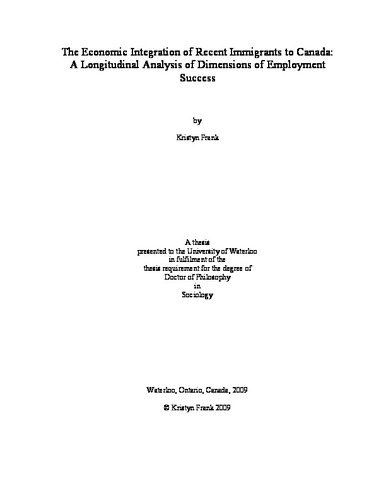| dc.description.abstract | The employment success of immigrants to Canada has been a primary focus of sociological research on immigrant integration. However, much of this research has examined the concept of “employment success” solely in terms of earnings. Studies that focus on whether immigrants obtain employment matching their desired or pre-migration occupations provide inadequate measures by examining whether or not immigrants obtain employment in their desired occupations at a very broad level. In addition, the majority of quantitative analyses use cross-sectional data to examine the economic integration of immigrants. The following research tests hypotheses which examine the relationships that various ascribed, human capital, and occupational characteristics have with multiple dimensions of employment success for a cohort of recent immigrants to Canada. Longitudinal analyses of several dimensions of the employment success of recent immigrants are conducted with the use of the Longitudinal Survey of Immigrants to Canada. These “dimensions” include an examination of the likelihood that an immigrant will obtain employment in his or her intended occupation, or a “job match”, at some point during his or her first two years in Canada, the rate at which he or she obtains a job match during this time, and the change in his or her occupational prestige scores and wages between jobs. A case study of immigrant engineers is also presented, providing some insight into the employment success of immigrants seeking employment in regulated professions. Human capital theory, the theory of discrimination, and Weber’s theory of social closure are employed to examine different predictors of immigrant employment success. A distinctive contribution of this study is the examination of how different characteristics of an immigrant’s intended occupation may influence the likelihood of him or her obtaining a job match and the rate at which he or she does so. By examining several different aspects of employment success and accounting for immigrants’ employment throughout their first two years in Canada a more comprehensive picture of the economic integration of recent immigrants is obtained. However, the results indicate that one over-arching theory is not adequate in explaining the process of the economic integration of recent immigrants to Canada. | en |

